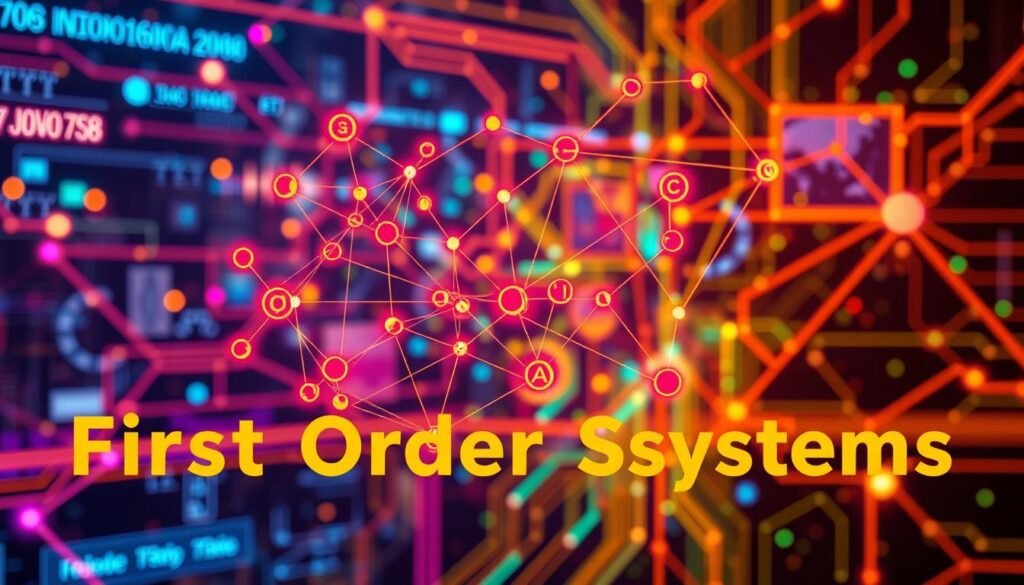First-order logic (FOL) is key in math, computer science, and AI. It helps us understand how things relate to each other. Datasets for first-order logic are vital for improving automated reasoning and machine learning.
This guide will give deep insights of first-order logical systems datasets. We’ll explore their purpose, popular datasets, and where to find them.
Key Takeaways
- First-order logic (FOL) extends propositional logic with quantifiers and predicates. It lets us make more detailed statements about objects and their relationships.
- Datasets for first-order logical systems are crucial for developing and checking automated reasoning, theorem proving, and machine learning techniques.
- Popular datasets include TPTP, FOLIO, Mizar Mathematical Library, CADE ATP System Competition problems, and Logic Grid Puzzles.
- These datasets cover a wide range of logical theories, mathematical proofs, and real-world reasoning tasks. They help advance many fields.
- Understanding first-order logic’s basics, like quantifiers, predicates, and formal systems, is key for using these datasets well.
Table of Contents
What Are First-Order Logical Systems?
First-order logic (FOL), also known as first-order logic, is a way to talk about things and how they relate. It’s different from simple true or false statements. FOL uses words, symbols, and rules to show complex ideas and connections.
Key Components of FOL
The main parts of first-order logic include:
- Constants, variables, and functions to show objects and their traits
- Predicates to show how objects relate to each other
- Quantifiers, like ∀ and ∃, to talk about all or some things
- Logical words like AND (∧), OR (∨), and NOT (¬) to link ideas
Importance of Datasets in First-Order Logic
Datasets are key for first-order logic. They help in many areas like making computers smarter, checking math, and understanding language. These datasets give us lots of examples to test and improve FOL methods.
| Comparison of Propositional and First-Order Logic | Propositional Logic | First-Order Logic |
|---|---|---|
| Expressiveness | Limited to simple true/false statements | More expressive, can represent complex relationships and quantify over objects |
| Syntax | Propositional variables and logical connectives | Includes variables, functions, predicates, and quantifiers |
| Decidability | Decidable | Semi-decidable (some formulas may not be provable as true or false) |
| Applications | Simple reasoning, digital circuits | Mathematics, philosophy, linguistics, computer science, AI |
First-order logic is a strong tool for complex ideas and connections. It’s used in many fields, like what is a first-order logic, is set theory a first-order logic, what is first-order logic in dbms, and what is propositional and first-order logic sets.
Popular First-Order Logical Systems Datasets
First-order logic has many well-known datasets. They help researchers, developers, and fans learn more. The TPTP, FOLIO, Mizar Mathematical Library, CADE ATP System Competition, and logic grid puzzles are some of the most used.
TPTP (Thousands of Problems for Theorem Provers)
The TPTP dataset has lots of first-order logic problems. They test automated theorem provers. These problems cover many topics and levels of difficulty.
FOLIO (First-Order Logic Inference and Optimization)
FOLIO is a key dataset for predicate logic and formal systems. It has first-order logic problems with natural language and symbolic AI versions. FOLIO helps link text and formal logic, useful for machine learning in logical reasoning.
Mizar Mathematical Library (MML)
The Mizar Mathematical Library has formal proofs and theorems in Mizar language. It’s a big help for those studying automated reasoning and theorem proving. It covers advanced math concepts.
CADE ATP System Competition (CASC) Problems
The CADE ATP System Competition tests automated theorem provers every year. The CASC Problems dataset is used in these tests. It shows how logical reasoning and theorem proving algorithms improve.
Logic Grid Puzzles
Logic grid puzzles are a special way to learn about first-order logical systems. They are grid puzzles that need logical thinking to solve. They help improve logical reasoning skills.
Applications of First-Order Logical Systems Datasets
First-order logical systems datasets are used in many areas. They help improve fields that need formal logic and knowledge representation. These datasets are key for systems that can reason, infer, and deduce. They make a big difference in artificial intelligence, natural language processing, and formal verification.
Expert Systems and Decision-Making
First-order logic is used to represent expert knowledge in many fields. This includes medicine, finance, and engineering. Logical systems are widely used where rules are needed for making decisions. They help build expert systems that can make smart and consistent choices.
Natural Language Processing and Semantic Analysis
First-order logic is important for understanding natural language sentences. It plays a big role in natural language processing. These datasets help with semantic analysis and understanding text. They help improve machine translation, sentiment analysis, and knowledge extraction.
Semantic Web and Knowledge Representation
First-order logical systems are the base for building ontologies and knowledge graphs in the Semantic Web. They help create precise and understandable knowledge. This makes it easier to query, reason, and integrate data on the web.
Robotics and Spatial Reasoning
First-order logic is used a lot in robotics. It helps represent spatial relationships, object properties, and task constraints. These datasets help make robots that can plan, navigate, and manipulate objects. They use formal logic to do this.
Database Systems and Query Languages
First-order logic is the foundation for query languages like SQL. It makes it possible to query and manipulate relational databases. These datasets help with complex data retrieval and processing. They let users find valuable insights from structured data.
First-order logical systems datasets are used in many areas. They show how versatile and important they are. They help advance fields that need logical reasoning, knowledge representation, and formal inference.
Choosing the Right first order logical systems dataset
Choosing the right dataset is key for tasks like knowledge representation and artificial intelligence. These datasets help build strong systems for handling logic and AI. When picking a dataset, several important factors should guide you.
First, think about the dataset’s purpose and scope. Do you need a wide range of logical problems or something specific like math proofs? Picking a dataset that matches your project’s goals is crucial.
Also, consider the dataset’s format and how easy it is to access. Formats like CSV or JSON make it easier to use with your tools. The licensing terms also matter a lot.
- Look for datasets with good quality and detailed annotations. These help you understand logic better and improve your AI systems.
- Make sure the dataset is big and diverse. It should cover many logical concepts. A bigger dataset means your models can learn more.
By looking at these factors, you can find the best dataset for your project. This will help you in knowledge representation, logical reasoning, and AI.

| Dataset | Logical Formalisms | Annotations | Size |
|---|---|---|---|
| TPTP (Thousands of Problems for Theorem Provers) | First-order logic, higher-order logic | Proofs, problem difficulty ratings | Over 21,000 problems |
| FOLIO (First-Order Logic Inference and Optimization) | First-order logic | Logical relations (e.g., entailment, contradiction, neutral) | Over 4,500 examples |
| Mizar Mathematical Library (MML) | First-order logic, higher-order logic | Proofs, mathematical concepts | Over 57,000 theorems |
By considering these points and looking at available datasets, you can pick the best one for your project. This will help you in knowledge representation, logical reasoning, and AI.
Fundamental Concepts in First-Order Logic
First-order logic is the base of many logical systems. It uses key concepts for clear thinking and showing information. At its heart are quantifiers, variables, predicates, and interpretations.
Quantifiers and Variables
Quantifiers like ∀ and ∃ are key in first-order logic. They help us say things about all or some objects. For example, “All birds fly” is written as ∀x bird(x) → fly(x).
Variables stand in for objects in our world. They can be free variables or bound variables.
Predicates and Interpretations
Predicates show what things are like or how they relate to each other. They can be about one thing or many. Interpretations give meaning to symbols and decide if statements are true or false.
“First-order logic is foundational in artificial intelligence, enabling machines to understand and reason about information in a human-like manner.”
First-order logic is great for solving complex problems. It’s used in computer science and philosophy. It helps us solve many problems and find new ideas.
Automated Reasoning and Theorem Proving
The first-order logical systems dataset is key for automated reasoning and theorem proving. These systems use rules and strategies to find answers from given information. Testing them on big datasets helps make them better at solving hard problems.
Inference Rules and Proof Strategies
Automated reasoning uses different rules and strategies to find answers. Some main ways include:
- Saturation-based theorem proving with neural representation of the prover’s state and attention-based action policy
- Integration of machine learning techniques, such as reinforcement learning, to automatically determine heuristics for proof guidance
- Adoption of deep learning methods to guide the overall theorem-proving process
Recent studies show these methods work well. For example, the TRAIL system did better than other systems on first-order logic problems. It proved about 15% more theorems than before. Also, TRAIL trained from scratch beat all other systems on the M2k and MPTP2078 datasets.
“TRAIL’s approach utilizing deep reinforcement learning offered significant improvements in performance compared to existing strategies for theorem proving.”
Using machine learning with automated reasoning is a big area of study. Schools like the Czech Technical University in Prague and Radboud University Nijmegen are leading. People like Lasse Blaauwbroek and David Cerna have made big contributions.
Machine Learning and Natural Language Processing
First-order logical systems datasets are key for improving machine learning and natural language processing (NLP). They help train models to understand and reason with logical statements. This lets them do tasks like logical inference, knowledge representation, and language. Adding first-order logic to AI and NLP systems makes them much better.
Recent studies show using large language models (LLMs) to translate natural language into first-order logic works well. It got an F1-score over 71% on both base and challenge datasets. This beats current top methods by a lot. It also shows strong generalization, with a 73% F1-score on the LogicClimate dataset.
Using first-order logical systems datasets in machine learning and NLP has led to big steps forward. These steps are in areas like formal verification, system analysis, and program correctness. Tools like Z3 and CVC are used, using satisfiability modulo theories to check logical formulas.
| Metric | Performance |
|---|---|
| F1-score on base dataset | 71% |
| F1-score on LogicClimate dataset | 73% |
| Improvement over state-of-the-art | 21% |
The progress in first order logical systems, knowledge representation, logical reasoning, and formal systems has been huge. It has helped a lot in artificial intelligence and machine learning. As we keep moving forward, we’ll see even more cool things. These will use symbolic AI and machine learning datasets to solve hard problems and improve natural language understanding.
“The integration of first-order logical systems into machine learning and NLP models has enabled significant advancements in areas such as formal verification and system analysis.”
Formal Verification and Software Correctness
Formal verification makes sure software and hardware work right. It uses first-order logical systems and datasets. These tools help check if systems are reliable and correct.
Formal verification is very important for software correctness. It helps reach the highest Evaluation Assurance Level (EAL7) in computer security certification. This shows its key role in keeping systems safe and reliable.
Techniques like deductive verification and automated theorem proving help check systems. They work on everything from digital circuits to software code. Formal verification makes sure programs match their specifications.
As systems get more complex, formal verification becomes even more crucial. By 2017, it was used in big computer networks and intent-based networking. It’s also used in operating systems like seL4 and CertiKOS.

Formal verification is promising for making systems more reliable. But, it faces challenges. A study found most bugs were at the interface between verified and unverified parts. This shows we need to check both parts and how they work together.
In summary, first-order logical systems datasets are key in formal verification. They help make software and hardware reliable and secure. This leads to new and better digital solutions.
Conclusion
First-order logical systems datasets are key for moving forward in fields like automated reasoning and machine learning. They help us understand how to use these datasets to innovate and meet our goals. By knowing what’s out there, we can pick the right one for our projects.
These datasets, like the FOLIO dataset, are crucial for creating smart theorem provers and AI models. They also help check the accuracy of complex systems. They offer a lot of challenges in areas like artificial intelligence and symbolic AI.
As researchers keep improving these datasets, we’ll see more progress in machine learning and other areas. Using these resources, we can help advance these fields. This opens up new chances for our own work.






0 Comments